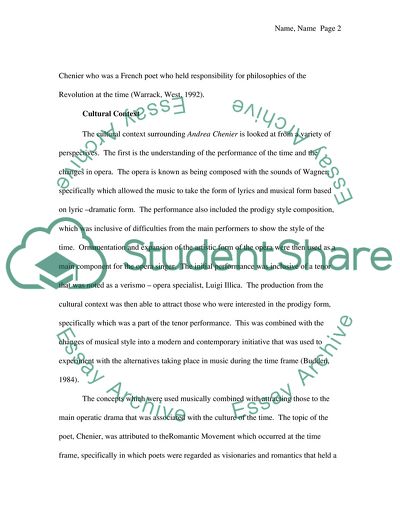Cite this document
(The Performance Andrea Chenier Movie Review Example | Topics and Well Written Essays - 2750 words, n.d.)
The Performance Andrea Chenier Movie Review Example | Topics and Well Written Essays - 2750 words. https://studentshare.org/performing-arts/1757453-critical-review-of-a-performance-theater-andrea-chenier
The Performance Andrea Chenier Movie Review Example | Topics and Well Written Essays - 2750 words. https://studentshare.org/performing-arts/1757453-critical-review-of-a-performance-theater-andrea-chenier
(The Performance Andrea Chenier Movie Review Example | Topics and Well Written Essays - 2750 Words)
The Performance Andrea Chenier Movie Review Example | Topics and Well Written Essays - 2750 Words. https://studentshare.org/performing-arts/1757453-critical-review-of-a-performance-theater-andrea-chenier.
The Performance Andrea Chenier Movie Review Example | Topics and Well Written Essays - 2750 Words. https://studentshare.org/performing-arts/1757453-critical-review-of-a-performance-theater-andrea-chenier.
“The Performance Andrea Chenier Movie Review Example | Topics and Well Written Essays - 2750 Words”. https://studentshare.org/performing-arts/1757453-critical-review-of-a-performance-theater-andrea-chenier.


